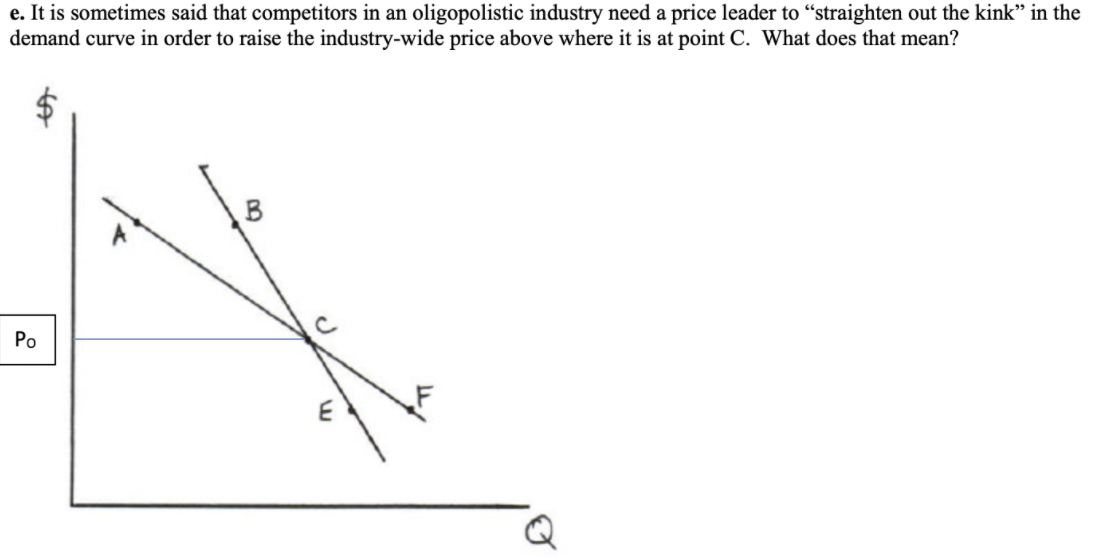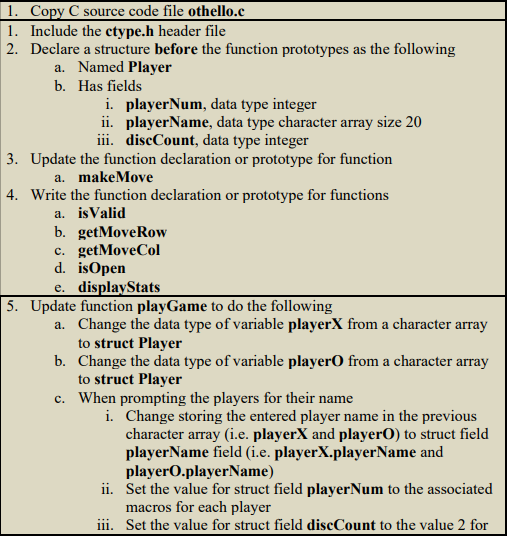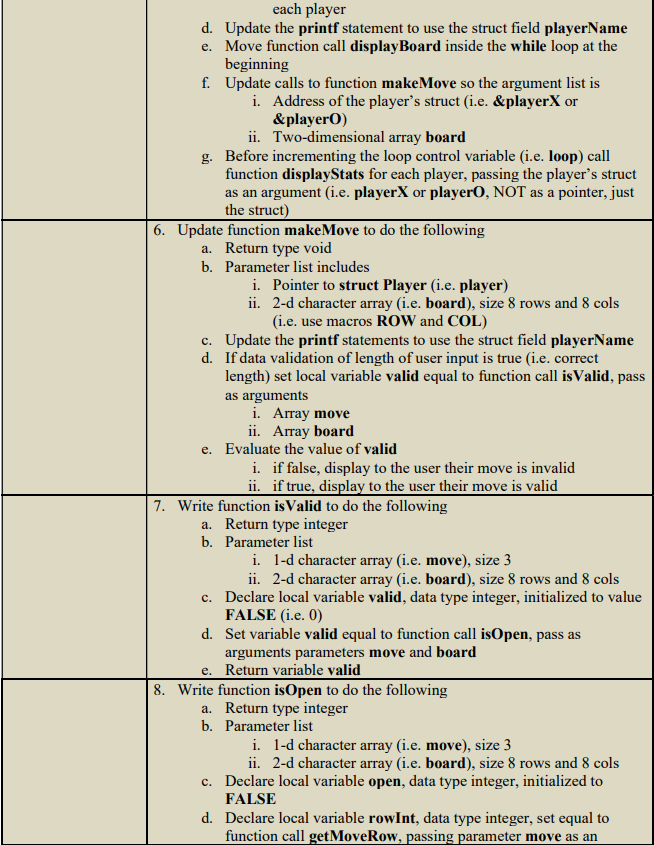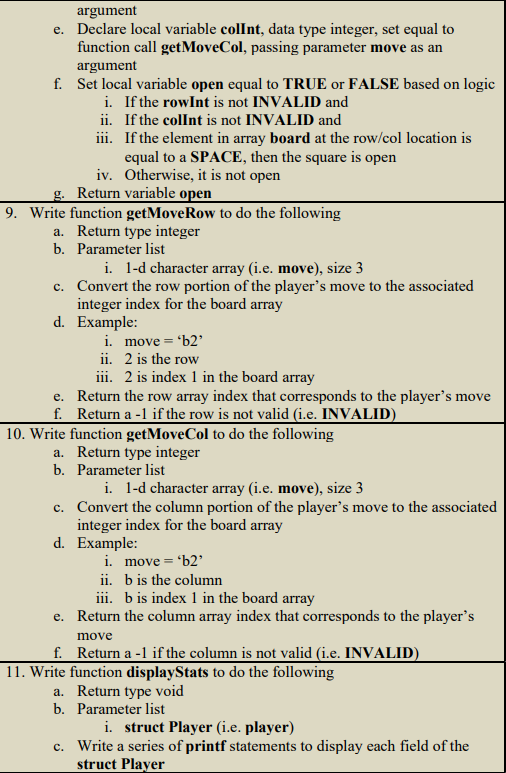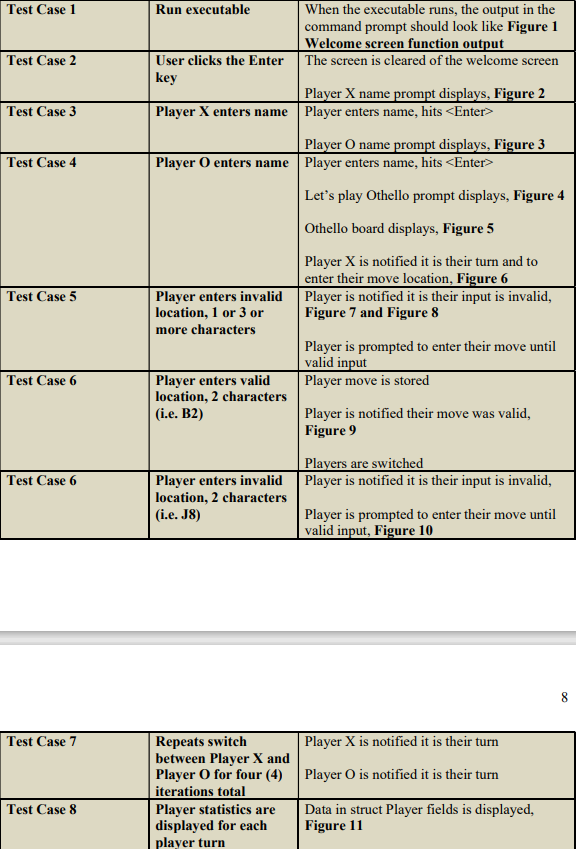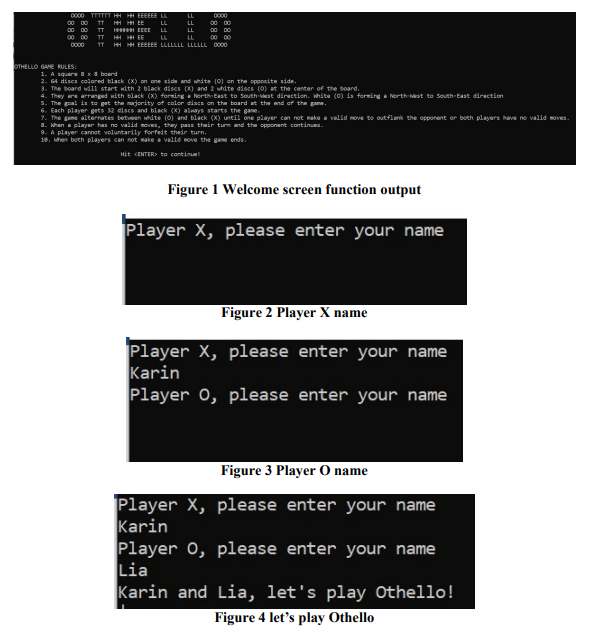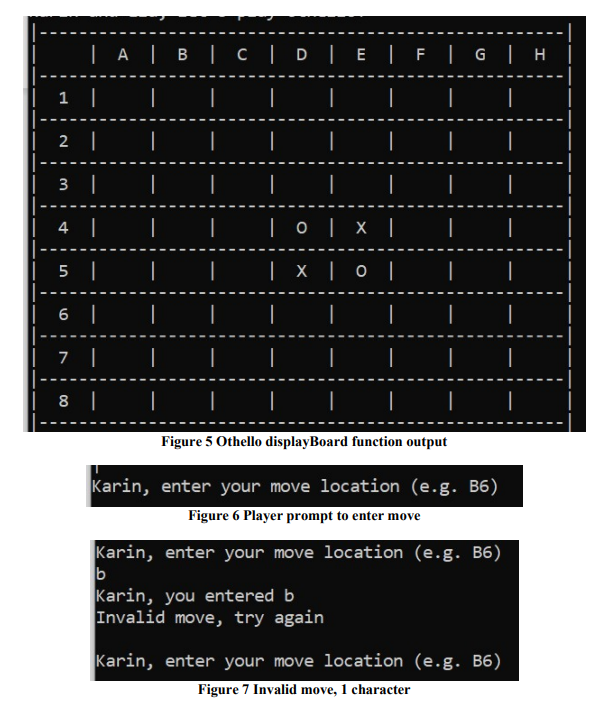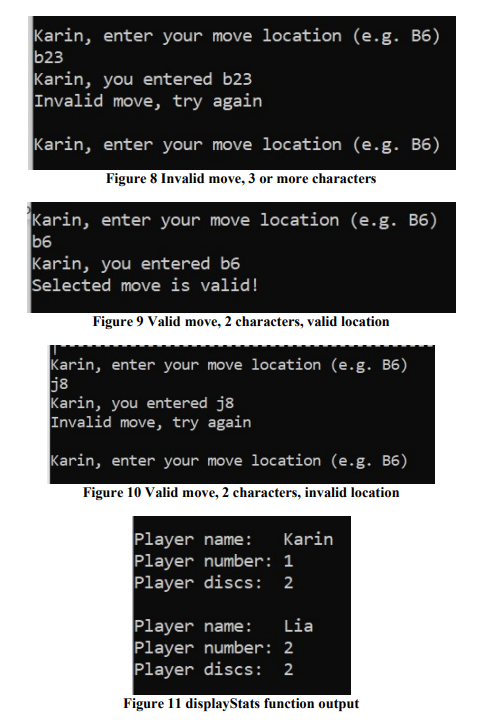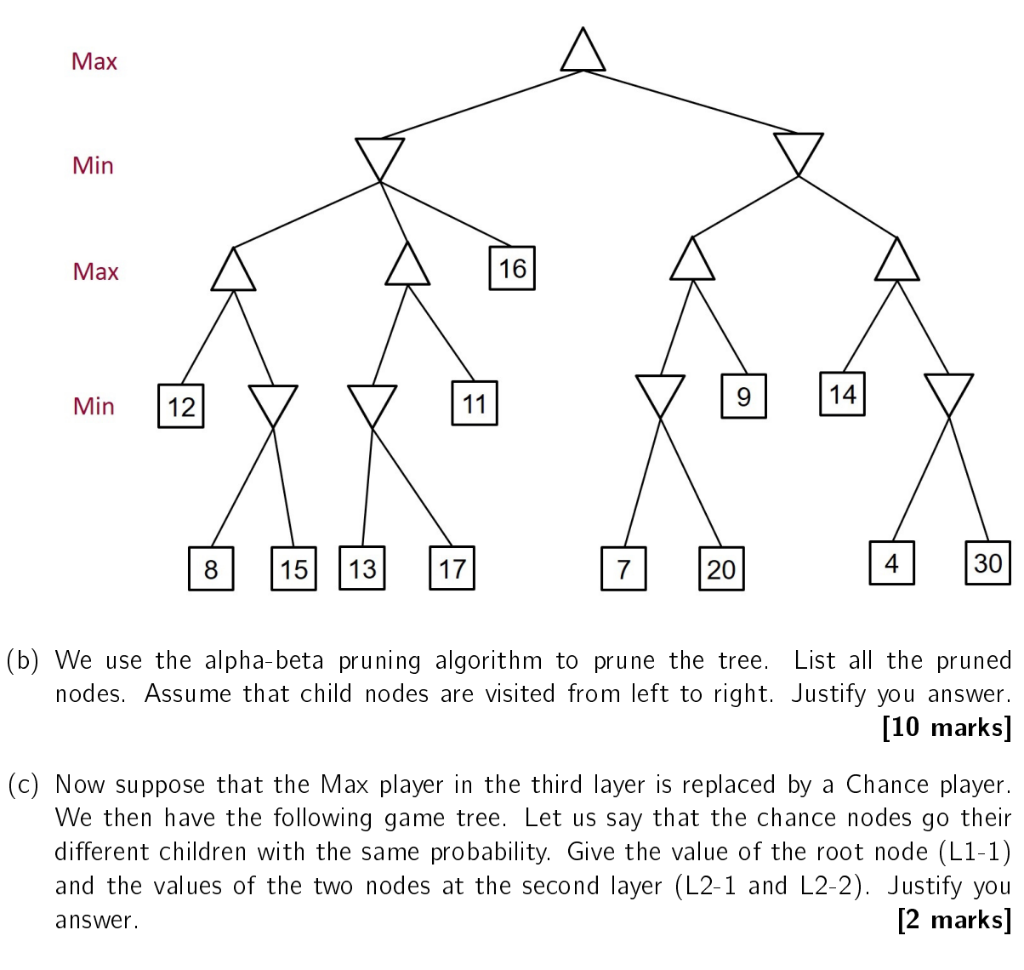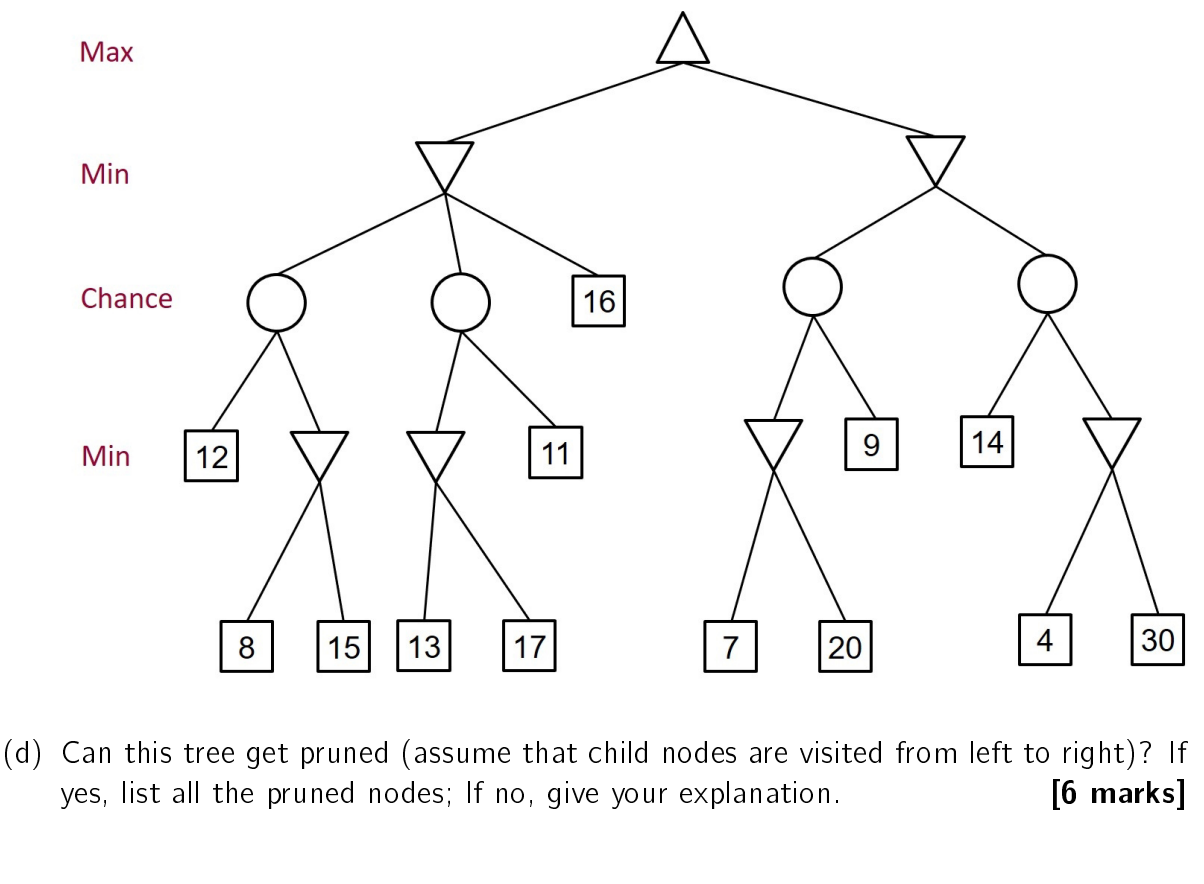[Solved] Write a complete Visual Basic program to do the following: Declare variables x and y to be integer variables
Write a complete Visual Basic program to do the following: Declare variables x and y to be integer variables. Prompt the user to enter values for x and y (one at a time). Read the values entered by the user into your program. Once the two values are read into the program and converted to their appropriate types, calculate the sum of the two values. Use a Console. WriteLine statement to display the values of x, y, and their sum.
Expert Answer
[Solved] choose a topic; collect some data; do some statistical analysis of the data (e.g. graphs, summary statistics); draw some conclusions
1 BASIC RULES • To do your project you need to choose a topic; collect some data; do some statistical analysis of the data (e.g. graphs, summary statistics); draw some conclusions; and write up your results clearly in a standard academic style, in less than 3,000 words. This website has some good information on what academic style means. If you struggle with English, you can get help at our writing center. • It often helps if the topic is posed as a question, which can be answered in the project, as is done in section 4 of the notes. • The project is designed to test your ability to collect and interpret data, not a test of the material covered in this course, so you do not need to repeat text-book material in the project or use every technique covered. • Choose something that interests you. It does not have to be on business or on an economic or financial topic (but it can be), it could also be on a sporting topic. • Most projects use standard data. But you should consult Paul Wohlfarth if your project uses confidential work data. We can write a letter to your employer about how the data will be handled. 1.1 YOU MUST • Choose a topic and develop the research project. You can do your project on anything that involves interpreting data, it does not have to be narrowly on business, economic or financial data. 1 • Get the data before you decide on the topic: you cannot do the project without data. Often choice of topic is prompted by the data available. Check library and database resources. Try Google or other search engines: just type the topic you are interested in and then data, e.g. “Road Traffic Deaths Data” got various sites with international data on road traffic deaths. Gap minder has also a vast amount of country data very well presented. • Conduct an appropriate statistical analysis of the data and draw conclusions. The type of analysis appropriate will depend on the question and data. • Write up the results clearly in an academic style in less than 3,000 words (excluding graphs, tables, appendices, title page and abstract, but including everything else). Do not exceed this upper limit: part of the exercise is to write up your results briefly. • Submit the final version, with the data, by Friday 11 June 2021 (0:00, i.e. by the end of 10 June). • Submit a project proposal to Paul Wohlfarth by Friday 14 May 2021. The proposal should only be a short paragraph on what you want to do and what data you’d like to use. It will not be marked but I will deduct 5 percentage points from your mark if you do not submit it on time. • Submit the data you used to estimate results. The data must be in a form that allows us to replicate what you did, e.g. in a file from a standard program. An excel file would be enough. If you use statistical software, keep any program files (.do-, .r-, .py-files, eviews workbooks, etc.) but you do not need to submit these. • Follow the mitigating circumstances procedure if you think you will miss the deadline (ask in the 5th floor admin office about more information on this). • Keep safe backup copies of your data and drafts of your text as you work (school computers are a safe place). We are very unsympathetic if you lose work because it was not backed up properly. 1.2 TITLE PAGE MUST CONTAIN • Programme and year • Title of project • Your name 2 • An abstract: maximum length 100 words • The number of words in the project • The programs you used. 1.3 THE PROJECT MUST HAVE • Numbered pages. • Graphs of the data (line graphs, histograms or scatter diagrams) • Numbered graphs and tables, give them titles and specify units and source. • A short literature survey and bibliography in a standard academic style. There are different citation styles being used (see this website). I don’t mind which one you follow but you must be consistent! • Detailed sources of the data and the data provided electronically. • Been your own work. You can discuss it with friends or class mates and it is a good idea for you to read and comment on each others work but it must be your work which you submit. Plagiarism is a serious offence (see the section in the programme syllabus). 2 ASSESSMENT CRITERIA The criteria are listed below to give you some guidance on what I pay attention to when marking your projects. You will receive one final mark and there are no fixed weights attached to them. Projects differ very much in the balance between them. 2.1 Writing and Scholarly conventions • Is there: a clear structure overall; clarity in individual paragraphs and sentences; logical arguments; and careful use of evidence? Are spelling and grammar correct? • Are any technical terms or abbreviations explained? The word limit is short so make every word count. • Are sources of ideas and quotations properly acknowledged? Is there a list of references? 3 • Are data sources properly documented? • Is the project written in an academic (as opposed to, say, journalistic) style? Copy the styles of articles in academic journals. 2.2 Originality/interest. Most topics can be made interesting if presented sufficiently well, but it is harder to find something interesting to say about a standard topic, than about a slightly more unusual topic. But whatever you do, you should have a clear idea on why it matters and how it can be useful. Make sure to link your research to that idea. Don’t just describe your data (this doesn’t mean don’t use descriptive statistics!) or perform all statistical methods you could think of without thinking about why you do what you do. What you do should have a purpose. 2.3 Analysis. • Does the work indicate a good understanding of the relevant context and literature? • Does it use the appropriate concepts from relevant economic or finance (or other) theory. • Is there a a logical argument and effective use of evidence to support the argument? • Did it answer the question posed? 2.4 Data collection/presentation • Has the appropriate data been collected (given time limitations)? • Have the data been checked? • Does the work show understanding of what the data actually measure and the limitations of the data? If students indicate that they put an unusual amount of work into collecting data, they will get some credit for it. • Does the work demonstrate the ability to summarize and present data in a clear and effective way? 4 2.5 Statistical Methods. Are the appropriate statistical methods used? Have any conclusions been suitably qualified? Does the work show understanding of the methods. 2.6 Interpretation. How does the report answer the question it posed? 3 WHAT YOUR PAPER SHOULD LOOK LIKE Your project report should tell a story, with a beginning, a middle and an end. It is a story about your investigation, how you answered the question, not part of your autobiography and the problems you had doing the project. The following structure is a suggestion, adapt it to suit your question. • ABSTRACT. Here you must summarize your project in 100 words or less. Many journals print abstracts at the start of each paper, copy their form • INTRODUCTION. Explain what you are going to investigate, the question you are going to answer, and why it is interesting. Say brieáy what sort of data you will be using. Finish this section with a paragraph which explains the organization of the rest of your project. • BACKGROUND. Provide context for the analysis to follow, discuss any relevant literature, theory or other background, explain specialist terms. Do not give standard textbook material; you have to tell us about what we do not know, not what we do know. On some topics there is a large literature on others there will be very little. The library and a search engine, like Google Scholar, can help you to find literature. In many cases, this section will describe features of the market or industry you are analyzing. You should make sure you explain features of the industry, or technical terms used in it, which may be very well known to everyone in it, but not to outsiders. • DATA. Here you should aim to provide the reader with precise enough information about definitions and sources to follow the rest of the report. Further details can be provided in an appendix. You should discuss any peculiarities of the data, or measurement difficulties. You may need to discuss changes in the definition of a variable over time. Check your data, no matter where it comes from. Check for units, discontinuities and changes in definitions of series, such as from the unification of Germany. Check derived variables as well as the raw data. Calculating the minimum, maximum and mean can 5 help to spot errors. Carry out checks again if you move data from one type of file to another. • ANALYSIS. The background should guide you in suggesting features of the data to look at, hypotheses to test, questions to ask. You must have tables and graphs describing the broad features of the data. In the case of time series data these features might include trends, cycles, seasonal patterns and shifts in the mean or variance of the series. In the case of cross-section data they might include tables of means and standard deviations, histograms or cross-tabulations. When interpreting the data, do not to draw conclusions beyond those that are warranted by it. Often the conclusions you can draw will be more tentative than you would like. Do not allow your emotional or ethical responses to cloud your interpretation of what you find in the data. If you run regressions, report: the names of variables (including the dependent variable); number of observations and definition of the sample; coefficents and either t-ratios, standard errors or p values; R-squared (or R-bar-squared); standard error of the regression; and any other appropriate test statistics such as Durbin-Watson for time-series. • SUMMARY AND CONCLUSIONS. What are the main Findings of your work: the answers to the questions you posed in the introduction? How must your findings be qualified because of the limitations of the data or the methods of analysis you have employed? Do they have policy implications (public or private)? Do you have suggestions for further work? • BIBLIOGRAPHY You must give a bibliographic citation for any work referred to in the text. If in doubt, follow the Harvard system, used in most economics articles. • APPENDICES Extra material, e.g. program output or detailed data definitions can be put in appendices. These do not count to the word total but the mark will be based on the main text. 4 Good luck You can learn a lot by doing your project. The skills you can develop in data analysis, interpretation and presentation are valuable in the labour market; and having a project to show a potential employer can be useful in getting a job. Doing your project can also be a very enjoyable experience. The more care you take with it, the more you will learn, and the more fun you will have.Expert Answer
[Solved] It is sometimes said that competitors in an oligopolistic industry need a price leader to “straighten out the kink”
It is sometimes said that competitors in an oligopolistic industry need a price leader to “straighten out the kink” in the demand curve in order to raise the industry-wide price above where it is at point C. What does that mean?
Expert Answer
An oligopolistic refers to a market structure where a small number of enterprises demonstrate significant control over particular market segment. Therefore….
[Solved] Service industries can make effective use of ABC systems
Service industries can make effective use of ABC systems. You are to use a fast-food business for this project. Your group needs to identify from three to six cost drivers for the business.
REQUIRED:
a. Identify three to six cost drivers for a fast-food business (e.g., McDonald’s or Wendy’s)
b. Assign the cost drivers to an activity cost pool. You should have two or three activity cost pools.
Expert Answer
Answer to Service industries can make effective use of ABC systems. You are to use a fast-food business for this project…
[Solved] Write a python script that: Prompts the user for the name of the directory in which they want to save a file
Write a python script that: Prompts the user for the name of the directory in which they want to save a file, Prompts the user for the name of the file they want to save to the directory in requirement 1, If the directory from requirement 1 doesn’t exist the program must create the specified directory, The program will prompt the user for their name, address, and phone number and write that data as a line of comma-separated values to the file using the directory and filename from requirements 1 and 2. (example: John Smith, 123 Main St,402-555-1212, and After the data has been written to the file your program must open the file, read the contents, and display the contents to the user as program output.
Expert Answer
import os filePath = input(‘Enter file path: ‘) fileName = input(‘Enter file name: ‘) if not os.path.exists(filePath): os.makedirs(filePath) complete…..
[Solved] Declare a structure before the function prototypes as the following a. Named Player b. Has fields i. playerNum, data type integer
UPDATE THE CODE IN C PROGRAMMING USING THE INSTRUCTIONS I PROVIDED PLEASE!
#include <stdio.h>
#include <stdlib.h>
#include <string.h>
#define TRUE 1
#define FALSE 0
#define NAME 20
#define ROW 8
#define COL 8
#define SPACE ‘ ‘
#define PLAYER_X 1
#define PLAYER_O 2
#define ZERO 0
#define ONE 1
#define TWO 2
#define THREE 3
#define FOUR 4
#define INVALID -1
// function prototypes
void welcomeScreen ();
void displayExplicitBoard();
void clearScreen();
void playGame();
void initializeBoard(char board[ROW][COL]);
void displayBoard(char board[ROW][COL]);
void makeMove(char playerName[NAME], int playerNum, char board[ROW][COL]);
// main function
int main()
{
// call function welcomeScreen
welcomeScreen();
// call function clearScreen
clearScreen();
// call function displayExplicitBoard
// displayExplicitBoard();
// call function playGame
playGame();
// program executed successfully
return 0;
}
// welcomeScreen function displays the Othello logo and rules of the game
void welcomeScreen ()
{
printf (“\t\t OOOO TTTTTT HH HH EEEEEE LL LL OOOO \n”);
printf (“\t\tOO OO TT HH HH EE LL LL OO OO \n”);
printf (“\t\tOO OO TT HHHHHH EEEE LL LL OO OO \n”);
printf (“\t\tOO OO TT HH HH EE LL LL OO OO \n”);
printf (“\t\t OOOO TT HH HH EEEEEE LLLLLLL LLLLLL OOOO \n”);
printf (“\n\n”);//
printf (“OTHELLO GAME RULES:\n”);
printf(“\t1. A square 8 x 8 board\n”);
printf(“\t2. 64 discs colored black (X) on one side and white (O) on the opposite side.\n”);
printf(“\t3. The board will start with 2 black discs (X) and 2 white discs (O) at the center of the board.\n”);
printf(“\t4. They are arranged with black (X) forming a North-East to South-West direction. White (O) is forming a North-West to South-East direction\n”);
printf(“\t5. The goal is to get the majority of color discs on the board at the end of the game.\n”);
printf(“\t6. Each player gets 32 discs and black (X) always starts the game.\n”);
printf(“\t7. The game alternates between white (O) and black (X) until one player can not make a valid move to outflank the opponent or both players have no valid moves.\n”);
printf(“\t8. When a player has no valid moves, they pass their turn and the opponent continues.\n”);
printf(“\t9. A player cannot voluntarily forfeit their turn.\n”);
printf(“\t10. When both players can not make a valid move the game ends.\n”);
}
// function displayExplicitBoard displays a hardcoded version of an Othello board
void displayExplicitBoard()
{
printf(“|—————————————————–|\n”);
printf(“| | A | B | C | D | E | F | G | H |\n”);
printf(“|—————————————————–|\n”);
printf(“| 1 | | | | | | | | |\n”);
printf(“|—————————————————–|\n”);
printf(“| 2 | | | | | | | | |\n”);
printf(“|—————————————————–|\n”);
printf(“| 3 | | | | | | | | |\n”);
printf(“|—————————————————–|\n”);
printf(“| 4 | | | | O | X | | | |\n”);
printf(“|—————————————————–|\n”);
printf(“| 5 | | | | X | O | | | |\n”);
printf(“|—————————————————–|\n”);
printf(“| 6 | | | | | | | | |\n”);
printf(“|—————————————————–|\n”);
printf(“| 7 | | | | | | | | |\n”);
printf(“|—————————————————–|\n”);
printf(“| 8 | | | | | | | | |\n”);
printf(“|—————————————————–|\n”);
}
// function clearScreen clears the screen for display purposes
void clearScreen()
{
printf(“\n\t\t\t\tHit <ENTER> to continue!\n”);
char enter;
scanf(“%c”, &enter );
// send the clear screen command Windows
system(“cls”);
// send the clear screen command for UNIX flavor operating systems
// system(“clear”);
}
void playGame()
{
// get player names
char playerX[NAME];
char playerO[NAME];
// Othello board
char board[ROW][COL]; // this is really a memory location of board[0][0]
// black (X) always goes first
int currentPlayer = PLAYER_X;
int loop = ZERO;
printf(“Player X, please enter your name\n”);
scanf(“%s”, playerX);
printf(“Player O, please enter your name\n”);
scanf(“%s”, playerO);
printf(“%s and %s, let’s play Othello!\n”, playerX, playerO);
// call function initializeBoard
initializeBoard(board);
// call function displayBoard
displayBoard(board);
while(loop < FOUR)
{
// request the player’s move
if(currentPlayer == PLAYER_X)
{
makeMove(playerX, currentPlayer, board);
currentPlayer = PLAYER_O;
}
else if(currentPlayer == PLAYER_O)
{
makeMove(playerO, currentPlayer, board);
currentPlayer = PLAYER_X;
}
loop++;
}
}
void initializeBoard(char board[ROW][COL])
{
for(int row = 0; row < ROW; row++)
{
for(int col = 0; col < COL; col++)
{
if((row == THREE && col == THREE) || (row == FOUR && col == FOUR))
board[row][col] = ‘O’;
else if((row == THREE && col == FOUR) || row == FOUR && col == THREE)
board[row][col] = ‘X’;
else
board[row][col] = SPACE;
}
}
}
void displayBoard(char board[ROW][COL])
{
printf(“|—————————————————–|\n”);
printf(“| | A | B | C | D | E | F | G | H |\n”);
for(int row = 0; row < ROW; row++)
{
printf(“|—————————————————–|\n”);
printf(“| %d |”, (row + 1));
for(int col = 0; col < COL; col++)
{
printf(” %c |”, board[row][col]);
}
printf(“\n”);
}
printf(“|—————————————————–|\n”);
}
void makeMove(char playerName[NAME], int playerNum, char board[ROW][COL])
{
char move[THREE];
int valid = FALSE;
// loop until the player enters a valid move
while(valid == FALSE)
{
printf(“%s, enter your move location (e.g. B6)\n”, playerName);
scanf(“%s”, move);
printf(“%s, you entered %s\n”, playerName, move);
// clears the buffer of extra characters
getchar();
// fflush(stdin);
int length = (int)strlen(move);
if(length == TWO)
valid = TRUE;
else
valid = FALSE;
if(valid == FALSE)
printf(“Invalid move, try again\n\n”);
}
}
Expert Answer
The answer provided below has been developed in a clear step by step manner.Step: 1
void playgame() {
char playerX[20]=NAME;char
playerO[20]=NAME; int current player=1;
int loop=zero
printf(“Hi playerX…..
[Solved] M,n,K- game with AI Artificial intelligence(minimax, alphabeta pruning
M,n,K- game with AI Artificial intelligence(minimax, alphabeta pruning https://en.m.wikipedia.org/wiki/M,n,k-game implementation m, n, k with AI(artificial intelligence) and algorithms minimax and alphabeta pruning. Develop an algorithm in python, java,C# or C++ console should receive as input the dimensions m, n, j (the player), the gamehuman versus artificial intelligence. the constant k is a state of the game Tic-tac-toe. The player “X” is represented by the integer 1, input terminal / console with passage of arguments: Example of a 3 — 3 entry, k = 3 being played by “X”. output terminal / console: The algorithm developed should print on the standard output of the operating system the result This is a C++ code run it on c++ 2011 and above for compilation: #include <iostream> #include <algorithm> #include <vector>….
the player “O” by the integer 2 and blank positions on the board by the integer 0. Example of
Possible valid entries include:
./a.out 3 3 1 3 0 0 0 0 0 0 0 0 0
Example of a 3 — 3 entry, k = 3 being played by “O”.
./a.out 3 3 2 3 1 1 2 0 0 0 2 1 0
Example of a 4 — 4 entry, k = 2 being played by “O”.
./a.out 4 4 2 2 1 2 1 2 0 0 0 0 0 0 0 0 0 0 1 0
of the game played by the BOT through a pair of indices ij, where (i Example of a valid output:
1 1
Example of a valid output:
2 1Expert Answer
[Solved] Consider the following minimax game tree. There are two players Max and Min
Consider the following minimax game tree. There are two players Max and Min; the player Max wants to maximise the utility and the player Min wants to minimise the utility. The tree has five layers and we can use Lm-n to denote the nth node from left to right in the layer m; for example, the root node can be denoted by L1-1, the first node at the bottom layer (with value 8) can be denoted by L5-1, and the fourth node at the fourth layer (with value 11) can be denoted by L4-4. Give the value of the root node (L1-1) and the values of the two nodes at the second layer (L2-1 and L2-2). Justify you answer
Expert Answer
[Solved] Select a published article on big data and health care from the Walden Library that discusses trends, potential use
With advances in medical-records management and the ability to store massive amounts of data, opportunities for analyzing health information have grown in almost unimaginable proportions in the past decade. “Simple” databases with thousands of fields now seem quaint and almost irrelevant, as “big data” appears on the horizon as the emerging answer to many health-related data questions.
However, the concept of big data has as many detractors as supporters, and arguments range from big data being the answer to reducing costs and improving health care, to big data potentially leading to discrimination and total government or corporate control.
For this Discussion, you will investigate how big data have been applied to health care, and you will consider the potential use of big data by medium and small local health jurisdictions.
To prepare:
- Select a published article on big data and health care from the Walden Library that discusses trends, potential use, or issues related to using big data in health care.
Post analysis of the article you selected. Include the following in your post:
- A brief description of the published article you selected, including:
- research question,
- dataset used, and
- source of the data.
- An explanation of your position on the use of big data for health care. Do you think that analyzing and using big data in health care can provide crucial answers and lead to great innovation and breakthroughs?
- To what extent do you think that privacy and data security concerns and the potential misuse of data outweigh the potential advantages? Justify your position.
- Using examples, describe how local health authorities can use secondary data sources in their jurisdictions.
Support your post based on the Learning Resources and current literature. Use APA formatting for your Discussion and to cite your resources.
Expert Answer
Answer to Select a published article on big data and health care from the Walden Library that discusses trends, potential use….
[Solved] A brief description of the public or nonprofit organization you selected
A brief description of the public or nonprofit organization you selected. Then, describe at least two motivational strategies you believe would be most effective for employees in the organization, and explain why. Finally, explain how you might apply these strategies in the organization. Be specific.
Expert Answer
The Public organization that I am going to discuss is Martin Army Community Hospital. This is a military hospital that is open to all service members, service members aged eligible children and spouse, and retirees of all services. “Martin Army Community Hospital (MACH)….


